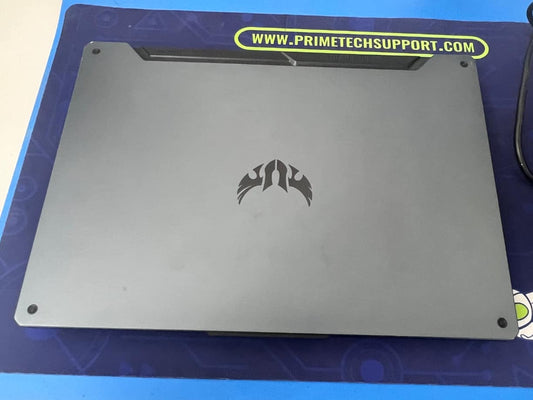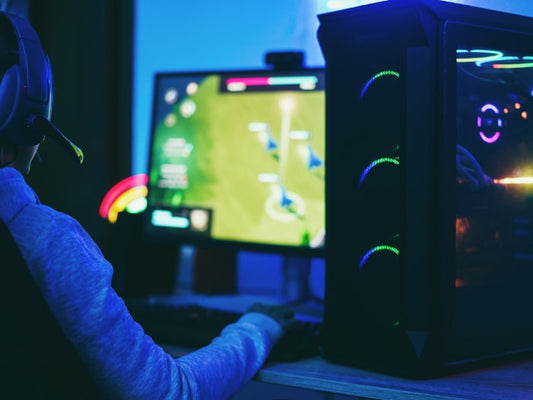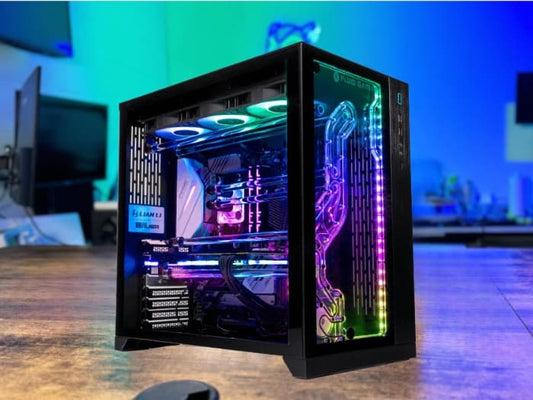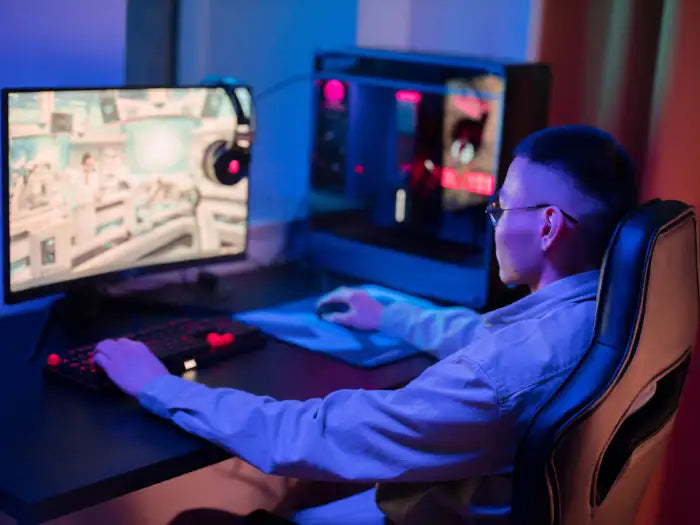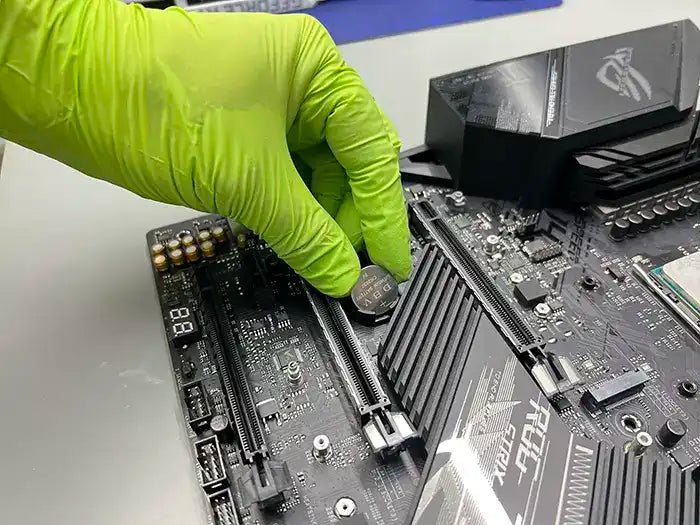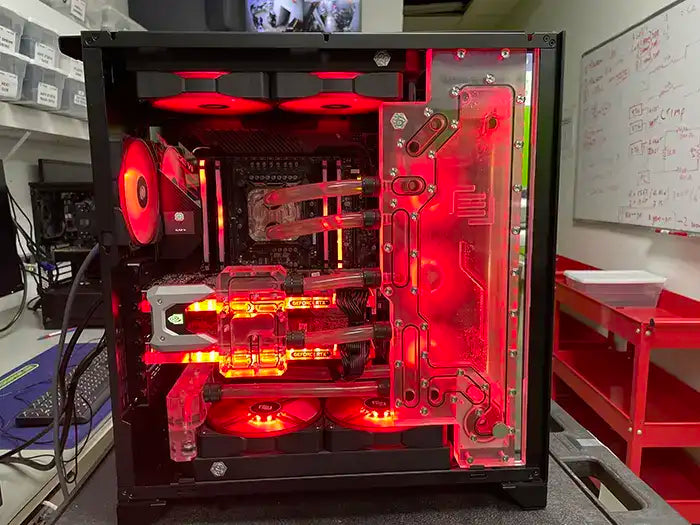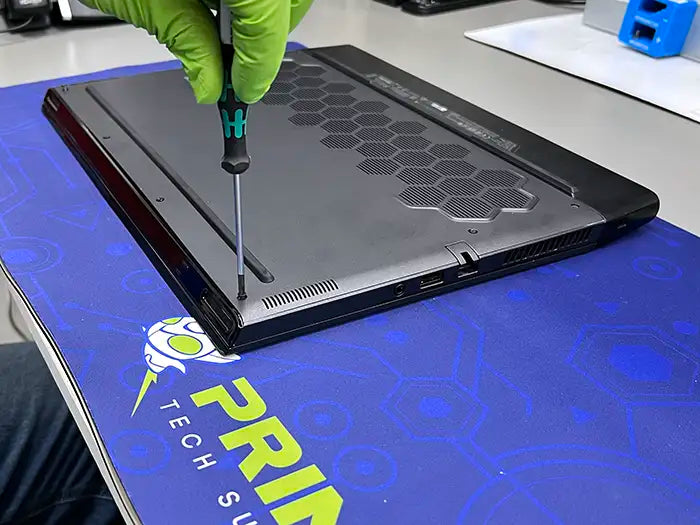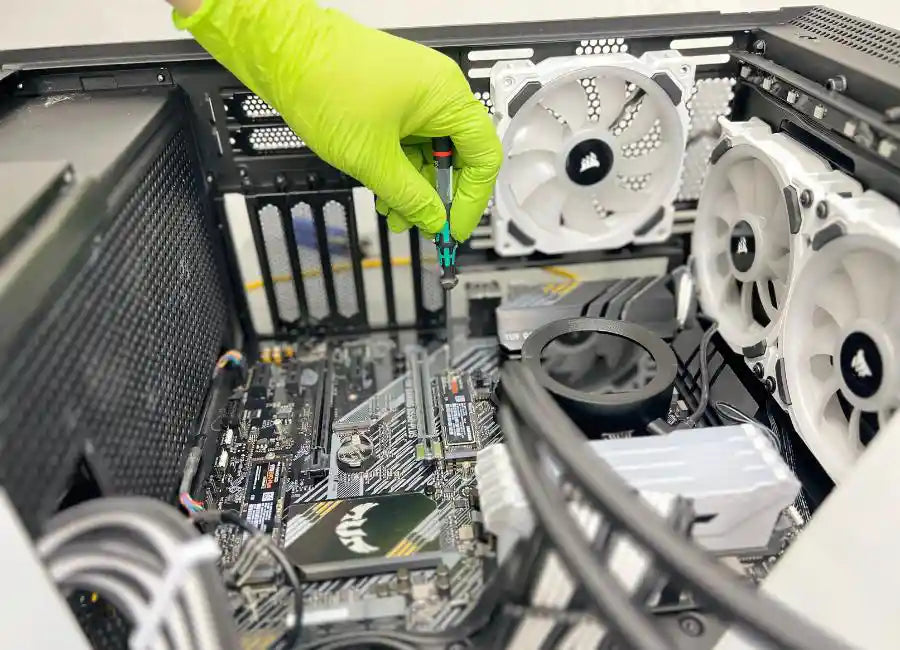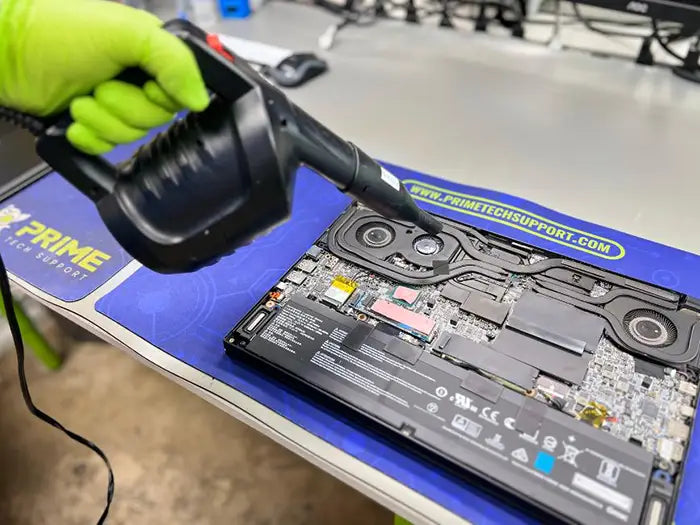How To Overclock PC For Gaming
Table of Contents
- Is Overclocking Good For Gaming?
- 1. Performance gains
- 2. Hardware Upgrades
- 3. Warranty Issues
- 4. Power consumption
- 5. Stability and efficiency issues
- Is It Good To Overclock Your PC?
- How To Overclock Your PC For Gaming
- Overclock Your CPU For Gaming PCs
- Overclock Your GPU For Gaming PC
- Final Verdict
- FAQs
- Is It Easy To Overclock A PC?
- Will Overclocking GPU Increase FPS?
- How Much FPS Can Overclocking Give?
- Source
Do you go through PC’s performance issues when it comes to smooth gameplay? Do you understand the need to overclock PC for better gaming experiences? If not and you want to learn, then come with us on this journey to explore how to overclock your PCs for gaming.
Our experts will guide you on the importance of overclocking, the ways of overclocking and how to overclock the CPU and GPU of your PCs. So, wait no more!
Let’s Start Now!
Is Overclocking Good For Gaming?
Overclocking helps you to gain performance boost. The performance boost will ensure that your CPU has a tendency to make complex calculations much more efficiently. This will help you to have a smoother and lag free gaming experience.
However, the overclocking in gaming PC might also come with certain setbacks. These setbacks include hardware upgrades, warranty issues, increased power consumption and stability issues.
1. Performance gains
The CPU overclocking tends to improve the framerate in gaming PCs. The CPU overclocking allows you to experience smoother gameplays. The performance gains allow improved complex calculations during the gameplays.
2. Hardware Upgrades
Overclocking requires hi-end cooling mechanisms. Overclocking needs upgraded computer cases.
The Role of Cooling in Maintaining Your Gaming PC's Performance
3. Warranty Issues
The overclocking might put your components out of the company warranty the overclocking reduces the life of the components overall.
4. Power consumption
The increased power output requires higher energy inputs Increases power bills.
5. Stability and efficiency issues
The overclocking makes the reliability a bit compromised Reliability issues might bring lags and system freezing the efficiency is compromised due to the increased fan noise.
Is It Good To Overclock Your PC?
It is very good to overclock your PCs due to the following reasons:
- Strong performance
- Cost effective method to boost performance of the PC
- Personalization and good control
- Used for particular jobs
But you need to consider the following factors:
- Cooling solution
- Component quality
- Reason for overclocking
- Knowledge
- Skills
How To Overclock Your PC For Gaming?
There are a number of steps which you will have to follow to overclock your PC for gaming. All these steps need to be followed with great attention to detail, as missing out on one step or detail might cause errors.
Also, missing the details can also prevent you from achieving your desired performance goal and aims.
Overclock Your CPU For Gaming PCs
CPU overclocking is a way to boost your CPUs performance for the gaming PCs. It is important to know that all CPU available in the market are not compatible with the overclocking. There should be an unlocked multiplier available in your CPU to gain extra performance.
There are a number of ways in which you can overclock your CPU. The overclocking of your CPU for gaming PCs allows you to boost up your CPU performance significantly. This boost helps you to achieve improved processing and smooth gaming experience. The overclocking will also allow the CPU to make gaming calculations with an efficient processing speed.
Read our more about Overclocking Your Gaming PC: What You Need to Know
1. Get Software For Overclocking Your CPU.
The overclocking of CPU has also been done with the help of software. The recommended software for overclocking is Prime95 . But, to ensure that this software overclocking works. It is important to add monitoring and temperature tracking upgrades to your CPU.
CPU-Z and Real Temp should be used for monitoring and temperature tracking respectively. Once you have added the CPU-Z and Real Temp, now you can proceed with downloading the Prime95 software. The completion of this process will take you to the final stage of overclocking your CPU with software.
You can use a benchmarking tool to identify the clock speed of our CPU. This benchmarking will reflect that performance boost in your CPU.
2. Make Sure Your Computer's BIOS And Drivers Are Up To Date.
To ensure that you are able to overclock your CPU. It is important that your computer is up to date. The update is not only restricted to the operating systems and the drivers, but it also should include the BIOS firmware.
There is a simple guide towards updating the BIOS firmware of your CPU. The first step is to identify the firmware that you are already using. You need to identify the precise model and make of your motherboard. There are multiple ways to find the exact make and model your motherboard and its firmware.
But we will recommend you use the CPU-Z app. The CPU-Z app will allow you to know the exact details by just opening the app and clicking on the mainboard tab. Once you are familiar with the make and model details, you can move towards the next step. The updates to the firmware BIOS should be available on the manufacturer’s website.
You can go to the website and download the exact variant of the update. It is important that you only download the exact version of the update because the other ones will not work.
The wrong version can break your motherboard. Now after you have successfully downloaded the firmware you can go to the BIOS screen by hitting F2, F8 or F12 key. This screen will directly take you to the BIOS update utility and you can update your firmware.
Read to Understand the Role of the BIOS in a Gaming PC
3. Set Your Motherboard Settings Back To Their Original Defaults.
It is important to ensure that your BIOS has updated and is functional. Without the installation of the update there are no benefits. In this step, after ensuring that you have correctly updated the firmware BIOS. You need to restart the computer and get back into it again.
After reaching the main screen of your computer, you have to search for the option of optimized settings. The features in optimized settings will allow you to factory reset your motherboard to its original default settings. The factory resetting will take the settings back to the original except for the BIOS firmware. The update you have made to the firmware will remain intact.
After resetting it is recommended that you open the boot settings and double check the PC booting storage drive. The BIOS offers you a number of automatic clocking options.
But these automatic options are subjective to make and models of the motherboards. If you get lucky, your CPU will over clock manually. But, if it doesn’t happen, you can over clock the CPU by entering into manual overclocking platform.
4. Change The Clock Multiplier As Needed.
The clocking speed is determined by the multiplication of the two factors. These factors include the base clock and the CPU multiplier. To enhance the CPU clocking, you can increase the processor clocking speed by one unit.
Once you have increased the processor clocking multiplier, it is recommended to run the Cinebench on your system. It will help you to identify the stability of your CPU. To see the final clocking calculation on the screen. You will have to adjust the setting of the cores to Manual/sync.
After getting the final results, you have to save the settings and restart your computer. After getting back to the windows screen you have to run the CPU-Z and real temp on your system. These two programs will help you to identify that your CPU is running at an ideal temperature and doesn’t become very hot. The CPU-Z will allow you to check for the stability of the CPU.
Now you just have to reboot into BIOS and rinse, follow this unless you have achieved your desired results. However, if you experience the message which says that overclocking has failed. You have to step down the multiplier by one and then again reboot for the testing.
5. Check If Your Computer Works Smoothly Without Problems.
This is one of the crucial steps in the process of overclocking your CPU for gaming PCs. This step is based on checking the stability of your CPU after you have achieved the desired results from the overclocking.
In our recommendation it is important to give your CPU a 10-12-minute-high stress testing time. To do so, you can use Prime95. If your computer and CPU has survived this 10-minute torture test, then you have made a solid upgrade to your CPU.
But if you have failed then you can start again from step 1 or lowering your CPU clocking. Lastly, in this step of the process you have to ensure that the test running on Prime95 is stopped manually.
6. There Might Be More Things To Do In This Process.
There are many more things that you can do in this process to overclock your CPUs for gaming PCs. You can do the following:
|
Explore CPU overclocking |
· Investigate CPU overclocking to maximize the potential |
|
Caution with voltage and base clock |
· Adjust voltages during overclocking |
|
Intricate BIOS setting |
· Adjust base clock settings according to the BIOS settings |
|
BCLK adjustment |
· Use processors that allow for adjusting the base clock |
|
Risk of failure with BCLK |
· Always know that higher base clock can lead to failure so be careful |
|
Enhance CPU cooling |
· Improve the cooling of CPU and PC to get higher clock speed |
|
Consider gaming motherboard |
· Choose an efficient gaming motherboard that has a strong cooler. This will improve performance. |
Overclock Your GPU For Gaming PC
Overclocking your GPU remains highly important for gaming PCs. It offers boosted speed and smooth gameplay.
This is one of the most effective ways to get the extra power for gaming. There are several ways to overclock your GPU for gaming PCs. Some of these ways are explained in detail below.
1. Go For Easy One-Click Overclocking
Going for easy one-click overlocking can be an appealing choice for the gamers who are new to this world. If you need hassle free methods, this can be the best approach to do so. The one- click overclocking simplifies the procedure into just a single button. This makes it accessible even for the users who lack technical knowledge.
The manufacturers of the PCs/ GPUs mainly include overclocking sets in the graphic cards or utilized software. For example, Nvidia offers tools such as the Nvidia scanner. This scanner automatically overclocks your GPU based on its abilities. AMD provides the same feature in their software known as Auto overclocking.
The easy one- click overclocking has its own drawbacks as well. It may not increase the total potential of the GPU as it depends on the generic presets. These presets can be conventional to ensure stability among the hardware. The users/ gamers who want more customized overclock can go for manual overclocking.
So, it depends on the specific demands of the user. But one- click overclocking can be useful for you for better gameplay.
2. Get GPU Overclocking Software By Downloading
Another option for users is to get the GPU overclocking software by downloading. For players who need more control and personalization, they can download the overclocking software. This application offers a strong set of tools in order to fine–tune all performance aspects of the graphics card. The most popular and strongest tools for overclocking your GPUs are mentioned and explained in the table below.
|
· MSI Afterburner is one of the most well-liked GPU overclocking programs. · It works with a broad variety of graphics cards, not just MSI models. · Users get access to capabilities including core clock and memory clock tuning, voltage management, and fan speed customization after installation. · The user-friendly interface makes it suited for both novice and experienced users. |
|
|
· Another strong tool with a user-friendly UI is the EVGA Precision X1. · It provides thorough control over the voltage, memory, and core settings. · The software also offers real-time temperature, clock, and fan speed monitoring. · So, if you want to be sure that your overclocked settings are stable and don't cause overheating, you must have this information. |
|
|
· GPU Tweak II is a specialized overclocking tool for ASUS graphics cards. · It has a simple user interface with controls for changing fan speeds, memory frequencies, and core clocks. · To enhance system resources for gaming sessions, the software also has a gaming booster tool. |
3. Measure Your Performance With Benchmarks
In the world of gaming, you can improve the performance of your GPUs. This can be done with the help of overclocking. To do this, you can measure your performance with benchmarks. It is important to establish a line to measure the performance of the system before going for overclocking options.
The benchmarks are the basic tests made to investigate the abilities of the hardware. These tests offer valuable information about the performance of the system. This allows you to track the enhancements. It also helps you in identifying any possible problems in the system. So, to do this correctly, you can consider the following steps:
• Choose the accurate benchmarking tool
You can use effective tools such as 3D Mark, FurMark or Unigine Heaven. These are some good options for GPU benchmarking. You need to make sure that the benchmarking tools you choose are compatible with the model of your GPU.
• Run baseline tests
After that, you need to execute the benchmarking test at stock settings. This means that the GPU is running at its default clock speeds and voltage. This will provide a reference point to compare in future.
• Analyze the results
Then you need to examine the results from benchmarking- for metrics. This includes frame rates, stability and temperature. The analysis will allow you to understand the system's present performance. It will also help you in identifying any areas for improvement.
4. Adjust Memory Speeds As Needed
Memory speed plays an important part in the performance of GPU. So, adjusting the speed of memory impacts the gaming experience. You need to be careful in balancing stability and performance while adjusting the memory speed. to do this you can so the following:
• Understand memory types
GPUs use two main types of memory. This includes GDDR5 and GDDR6. Each memory has its own characteristics and the approach to overclock.
The GDDR6 is the most recent memory type. It offers better bandwidth and performance than GDDR5.
• Use GPU- Z for information
GPU- Z is a good tool to monitor the specifications of GPU. It offers information regarding the type of memory the GPU uses. It also tells the default clock speed and other major details about the GPU.
• Gradual memory overclocking
You can start by gradually increasing the memory clock. This can be done in small raises such as 50- 100 MHz at a time. You can also run tests such as the gaming sessions. This will make sure that the overclocked memory is steady.
• Monitor temperatures
When you overclock, you need to keep a check on temperatures. Overclocking memory can raise heat output. It also causes instability or throttling of thermal. Also, make sure that the cooling solution is able to handle the increased load
5. Boost Your GPU's Power With Overclocking
You can boost your GPUs power with overclocking. It includes the core clock speed and regulating voltages. It also includes fine-tuning the setting to get higher potential from the graphics card. To do this, you can do the following:
• Use GPU overclocking software
You can download the reliable GPU overclocking tools. This can be the MSI afterburner or AUS GPU tweak II. These tools offer user- friendly interface to adjust core speeds of clock, voltage and fan settings.
• Core clock overclocking
You need to Start off by progressively raising the core clock by 10–20 MHz increments at a time. To ensure stability, stress test your GPU utilizing gaming sessions or benchmarking software after each tweak.
• Voltage adjustment
Voltage modifications are possible with some GPUs, which may increase stability at higher clock rates. But, be cautious, as rising voltages can result in higher heat output. To avoid overheating, closely monitor the temperature.
• Fan speed optimization
To effectively cool your computer when you overclock, larger fan speeds may be required. To maintain ideal temperatures, you need to alter fan speeds to strike a balance between performance and noise.
• Stability testing
You can run extended gaming sessions or employ stress testing software to make sure your overclocked settings are stable. Artefacts, crashes, or strange graphical abnormalities can all be symptoms of instability.
• Benchmarking
You can also rerun the benchmark tests you first ran to measure the overclocking-related performance improvements.
To measure the improvements, compare the outcomes to your baseline tests
6. Test Both Overclocks Together
Gamers are usually seeking ways to improve their gaming experiences. The GPU overclocking can be a strong way to get extra performance. To do this, you can test both overclocks together. Because adjusting both memory speed and core clock is easy. But you need to know that combining these two things needs testing. For this, you can do the following:
|
Core clock and memory synergy |
The memory speed influences rates of data transfer in GPUs. The core clock impacts the processing speed of the GPUs. So, this best situation for overclocking can help in maximizing the performance. |
|
Observe performance gains |
You can determine the influence on frame rate and on the gaming performance. You also need to know that the main aim is not to get the highest clock speed. It is to find the strong balance that offers stability and performance. |
|
Benchmark testing |
You can repeat the benchmarking test with combined overclocks and compare them to measure the performance for overclocking together. |
7.Keep Testing To Make Sure It Works
Overclocking is a process that ensures consistency. So, to get the better out of your GPUs for gaming, you need some serious testing to make sure it works. You can do the following tests to ensure performance.
|
Stability testing |
You can use the stress test tools to engage in long term gaming. You need to check for any artifacts, unusual behavior or crashes. If something seems unstable, dial back to the settings of overclock. |
|
Temperature testing |
Overclocking leads to additional heating. So, keeping a check on temperature is vital. Make sure that the temperature is within the limits to avoid any damage. |
|
Power consumption consideration |
Overclocking leads to high power consumption. You need to check power by using tools to monitor. This will make sure that your power supply handles the load effectively. |
|
Incremental adjustment |
Overclocking is a slow procedure. You need to make changes in small parts. This will enable you to point out the enhanced setting of overclock. |
|
Backup and profile saving |
You need to save your stable overclock to easily switch between different settings for like gaming. |
8. Learn How To Use AMD Wattman
For gamers who use the AMD cards, AMD Wattman can be a good tool to consider. It offers control over the GPU settings. So, to understand how it can be used to improve your overclocking for enhanced performance can be done in the following ways.
|
Accessing AMD Wattman |
You can open the AMD software and route the gaming tab. Then you can clock of the global settings, and you will find AMD Wattman |
|
Core clock and memory adjustment |
You can then adjust the clock speeds, voltage and memory. |
|
Temperature and fan control |
It also offers ways to control fan speed and temperature. |
|
Monitoring performance metrics |
You can use real- time tools to monitor features in AMD Wattman. This will keep track of the GPU overall. |
|
Producing and switching profiles |
Wattman also enables you to make and save different profiles for different situations. So, you can create gaming profiles. |
Final Verdict
The overall performance of your CPU and GPU is dependent on how efficiently you’ve overclocked your CPU and GPU in your gaming computer.
It is always recommended that you should test your CPU by giving it a torture test after you’ve done the overclocking. This will ensure that you don’t face stability issues in the future.
It is also important to learn that the overclocking of CPU and GPU might not give you the desired gains without any problems.
So, it is important that you upgrade the other essential components of your computer system along with the overclocking.
FAQs
Is It Easy To Overclock A PC?
The overclocking of a PC is an easy job, you take the procedure step by step. The process remains easy if you don’t miss details that are recommended by us.
But if you miss the details and the steps of the overclocking. You might not be able to complete the procedure at all.
Moreover, even if you complete the process by missing out on the details. Your motherboard will be at high risk of going to brick mode. Apart from the worst-case scenario, you can experience stability issues, overheating issues and crashing issues.
Will Overclocking GPU Increase FPS?
YES, is the correct response to this query! After you overclock your GPU, it becomes substantially better at transferring graphic data. Your GPU will be running at a significantly higher capacity than it was by default thanks to overclocking.
Thus, using the GPU in graphically demanding games considerably increases total frame rates. Your computer's computing system also has other components that affect the FPS. These elements include bottlenecks, the cooling system, and game optimizations.
How Much FPS Can Overclocking Give?
The overclocked CPU and GPU alone do not determine the FPS. The quantity of FPS is heavily reliant on a lot of other variables. The bottlenecks are one of the key causes. The total performance of the FPS will decrease if your GPU and CPU perform differently.
Your CPU and GPU's stability are the second crucial component. Correct overclocking of your CPU and GPU is crucial. Finally, for the FPS to be sufficient, the cooling must be effective.
Source:
https://www.intel.com/content/www/us/en/gaming/resources/5-reasons-to-overclock-your-next-pc.html
https://en.wikipedia.org/wiki/Overclocking
SAME-DAY REPAIRS
Gaming PC Diagnostic
Fast tech support for Gaming Computers. We exceed customer expectations and ensure satisfaction.

